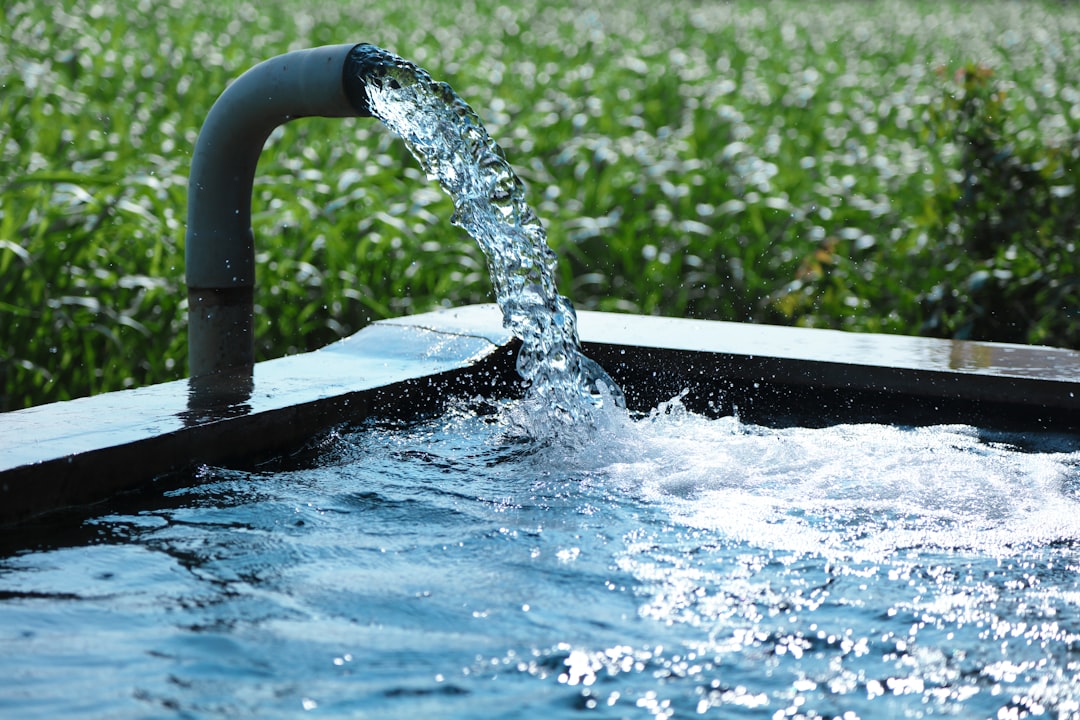

Engage prospects with a scan and streamline customer engagement with FREE QR code marketing tools by Sona – no strings attached!
Create a Free QR CodeFree consultation

No commitment

Engage prospects with a scan and streamline customer engagement with FREE QR code marketing tools by Sona – no strings attached!
Create a Free QR CodeFree consultation

No commitment
QR codes have evolved from a novelty to an essential bridge between offline assets and rich digital experiences, especially in the water purification equipment industry. Buyers increasingly demand instant access to installation guides, certifications, warranty data, and maintenance schedules straight from the point of use, without complex onboarding or unnecessary app downloads. A single scan removes friction for operators and procurement teams, reduces support load for suppliers, and turns static print into an interactive doorway to service and sales.
When critical information is trapped in paper manuals or hidden in binders, suppliers risk frustrating buyers, missing out on growth opportunities, and running into regulatory challenges. Paper-based experiences make it hard to prove authenticity, confirm maintenance schedules, or capture timely intent from decision-makers. QR codes provide direct, trackable entry points to digital content, turning disconnected touchpoints into measurable engagement moments and closing gaps that keep high-value prospects hidden.
This guide provides proven strategies for leveraging QR codes throughout the water purification equipment lifecycle. Discover how to digitize onboarding, strengthen regulatory communication, grow retention through smart segmentation, and turn scan data into actionable insights that drive business value at every customer interaction. With the right tools and a thoughtful rollout plan, such as the Sona QR product overview, every filter housing, controller, invoice, and brochure can become a high-signal moment that improves experience and revenue at the same time.

A common headache for water purification equipment suppliers is the reliance on static, paper-based collateral. Warranty cards go unreturned, instructions get lost in busy plant rooms, and compliance paperwork falls out of date. These legacy pain points restrict the ability to track who is actually interacting with products and where they are in the lifecycle, resulting in missed follow-up opportunities, incomplete customer profiles, and unnecessary service calls.
QR codes bridge these gaps by placing the right resource in the right context. A label on a control panel can open a pre-filled service request. A code on a filter cartridge can launch a reorder form. A badge on a certification document can display the latest compliance status. By upgrading paper materials and analog workflows with dynamic QR codes, suppliers unlock a smoother user experience and continuous visibility into how and when customers engage.
Replacing printed brochures, paper forms, and manual sign-up sheets with QR-enabled flows reduces errors, accelerates action, and makes every interaction count. Solutions like Sona QR are built to support every step of this transformation, from code generation and design to analytics and CRM integrations.

Water purification equipment suppliers often manage complex deployments across hospitals, factories, campuses, and commercial properties. Teams need instant access to maintenance schedules, spare parts catalogs, technical certifications, and installation documentation. Without a clean bridge between physical assets and digital resources, engagement goes dark and compliance tasks become tedious and error-prone. QR codes unify these journeys so that the right action can be taken in seconds.
Beyond convenience, QR codes introduce real trackability and flexibility. As regulations evolve or product specifications update, static print quickly becomes obsolete. Dynamic QR codes let you redirect to new content without reprinting, maintain a single source of truth for regulatory records, and analyze which assets and audiences are truly driving outcomes. This is especially valuable when products have long lifecycles and multiple stakeholders share responsibility for operations and servicing.
For example, adding QR codes to compliance certificates lets auditors confirm real-time documentation with a single scan. Tagging maintenance panels with QR codes can increase on-time service completion and reduce unplanned downtime by guiding technicians straight to the correct checklists and parts lists. Explore more applications in this water treatment overview.

The value of QR codes in water purification stems from matching the format to the job. Suppliers manage a variety of touchpoints, from product packaging to on-site equipment to event materials. Each format has strengths that align with the tasks end users perform in the field or at their desks.
In this vertical, the most useful formats simplify service and procurement. Forms capture critical data without paper. Web links provide up-to-date documentation. vCards make it effortless to reach the right service representative. Wi-Fi access can streamline site setups when connecting devices to a secure network is required. App downloads guide users to approved monitoring or authentication tools.
Managing these formats inside a centralized platform such as Sona QR helps suppliers govern content, maintain compliance, and keep customer journeys consistent across thousands of printed assets.

Growth slows when offline engagement goes untracked. Without data from real-world interactions, it is hard to identify which accounts are active, which products are due for service, and where there is appetite for upgrades or expansions. QR codes turn physical touchpoints into always-on lead and insight generators.
The key is to place QR codes where intent is naturally high. Focus on surfaces that users already interact with during installation, operation, and maintenance. Each scan becomes a micro-conversion you can route to the right next step and stakeholder, feeding revenue operations with timely signals.
When every offline asset doubles as a digital onramp, your team can spot revenue opportunities faster and orchestrate outreach with confidence. These scans also highlight content gaps and help you iterate toward the placements and messages that influence buying decisions.

In complex environments, the difference between a smooth experience and a support ticket is often the clarity of the next step. Smart QR deployments reduce ambiguity and put the right action at a user's fingertips. They also generate structured data that operations, sales, and compliance teams can use to improve outcomes.
Below are high-impact use cases that align with common customer interactions across the equipment lifecycle. Each one can be deployed in days, measured in weeks, and scaled across product lines and regions once proven.
Real-world benefits include improved service adherence, higher reorder rates, and faster resolution times. The added visibility into who scanned, where, and why creates a feedback loop that helps teams prioritize accounts, surface expansion opportunities, and proactively address compliance needs.
Each scan is a behavioral signal. It tells you something about the person, the context, and their intent. By deploying multiple QR codes tied to specific content and actions, you can segment audiences automatically and trigger follow-ups that match what the user is trying to accomplish. For deep campaign ideas, explore intent-driven retargeting.
Sophisticated teams enrich these signals with metadata like location, asset type, and time of day. They then sync this data into CRM, marketing automation, and ad platforms. The result is a living map of buyers and users where outreach is timely, relevant, and more likely to convert.
Suppliers that treat scans as first-party intent signals build stronger pipelines and reduce wasted outreach. Instead of broad campaigns, your team can nurture decision-makers who signal interest and accelerate accounts that show repeated engagement.
Disconnected campaigns erode trust and waste budget. QR codes create a connective tissue across offline and digital channels so that regardless of where a journey starts, the next step is intuitive and measurable. For water purification equipment suppliers, this means fewer dead ends and more data-rich interactions.
A unified QR strategy lets you see how brochures, signage, events, and invoices contribute to pipeline and retention. It also aligns marketing with sales, service, and compliance by using a shared framework for content access and tracking.
QR codes are the offline onramp to your digital marketing engine. Using a centralized platform like Sona QR, you can manage all codes, monitor performance, and sync scan data with your CRM and ad platforms to optimize spend and sequencing.
Launching a QR initiative is not just about generating a code. It is about designing a clear path from scan to value and instrumenting it so you can learn and iterate. A structured checklist keeps teams aligned and reduces missteps that dilute results.
Before you begin, consolidate your goals, your priority assets, and the systems that will receive scan data. Think through which audiences you want to influence, what action they should take, and how you will measure success. The following steps provide a repeatable blueprint you can adapt across product lines and regions.
This process not only ensures a strong initial deployment but also establishes a cycle of ongoing optimization based on real-world results. Treat each launch as a learning lab and your QR strategy will compound in value.
Many suppliers invest heavily in print and in-field materials without a clean way to prove impact. Historically, offline touchpoints have generated engagement without attribution. QR codes change that by embedding measurement into every interaction. When paired with the right analytics, you can connect scans to pipeline, bookings, and revenue.
The critical shift is to look beyond the scan count. What matters is the downstream behavior and how it influences the buyer journey or service outcomes. With tools like Sona QR and Sona, scan activity becomes a first-class signal in your marketing and sales systems and a driver of smarter operations.
When scan analytics are integrated with other digital touchpoints such as website visits, ad clicks, and email engagement, you can see a complete picture from first interaction to purchase and renewal. This insight lets you shift budget, refine messaging, and prioritize outreach to the accounts most likely to grow.
Once you have the basics in place, small improvements in design, placement, and automation can produce outsized gains. Treat QR deployment as a product that you iterate, not a one-off project. Over time, your organization will develop instincts about what works best by audience, environment, and task.
Focus on clear calls to action, minimal steps, and intelligent routing of data into your existing tools. Train teams to promote QR-enabled processes so customers know exactly why to scan and what they will receive.
Creative deployments can add momentum. Try QR codes on service vans that open a support request form, or use QR stickers on lab sinks to link to water quality testing guides and supply reorders. Start creating QR codes for free at Sona QR.
QR codes are transforming how water purification equipment suppliers connect physical assets to digital engagement. By embedding QR codes at critical touchpoints, suppliers replace paperwork bottlenecks with seamless digital access, gain new visibility into prospect and customer behaviors, and enable targeted follow-up that drives revenue.
Adopting a unified QR strategy powers immediate onboarding, easier compliance management, and a trackable journey from first inquiry to reorders. Every scan becomes a measurable, actionable point in the customer lifecycle, helping suppliers uncover growth and retention opportunities that were previously hidden.
When QR technology is integrated across marketing, product, and support, it becomes a competitive differentiator. Suppliers can deliver better experiences, meet regulatory obligations more easily, and achieve data-driven, scalable business results with less friction and more proof of impact.
QR codes have revolutionized the water purification equipment suppliers industry by transforming traditional product access and support into seamless, data-driven experiences. Whether it’s enabling instant access to detailed product information, streamlining maintenance instructions, or enhancing customer engagement, QR codes eliminate friction and provide real-time insights that empower smarter business decisions. Imagine your customers scanning a code to instantly troubleshoot equipment or reorder filters, boosting satisfaction and loyalty effortlessly.
With Sona QR, you gain the ability to create dynamic, trackable QR codes in seconds, update campaigns on the fly without costly reprints, and connect every scan directly to actionable analytics. This means you can optimize customer touchpoints, improve service responsiveness, and increase repeat sales—all while fully measuring your impact. Start for free with Sona QR today and turn every scan into a valuable connection that drives growth in the water purification equipment market.
QR codes provide instant access to installation guides, certifications, warranty data, and maintenance schedules while improving user experience, reducing support load, and enabling trackable engagement for suppliers.
QR codes on control panels or service stickers can open pre-filled scheduling forms that capture asset details, increasing on-time maintenance and reducing unplanned downtime.
Common formats include web links to documentation, forms for warranty and service requests, vCards for contact info, Wi-Fi access codes, and app download links tailored to user needs.
Suppliers can place secure QR codes on equipment labels and packaging that link to verification portals to confirm serial numbers and certifications quickly.
QR codes link to digital logbooks, checklists, and scheduling forms, making maintenance easier and ensuring timely service through pre-filled, context-aware workflows.
Every scan is tracked by asset, location, and time, allowing suppliers to measure engagement, identify high-intent buyers, and optimize placements and messaging for better conversions.
Suppliers can add QR codes to brochures, social media campaigns, direct mail, digital signage, and emails to create connected offline-to-online journeys with measurable outcomes.
Dynamic QR codes on compliance certificates and documentation provide instant access to the latest certifications and inspection records, simplifying audits and ensuring use of current materials.
QR codes are inexpensive to produce and easy to scale, offering cost-efficient ways to reduce errors, accelerate actions, and improve service bookings and reorder rates.
Static QR codes are suitable for fixed content without tracking, while dynamic QR codes support tracking, content updates, segmentation, and retargeting for evolving assets and campaigns.
Use Sona QR's trackable codes to improve customer acquisition and engagement today.
Create Your FREE Trackable QR Code in SecondsJoin results-focused teams combining Sona Platform automation with advanced Google Ads strategies to scale lead generation

Connect your existing CRM

Free Account Enrichment

No setup fees
No commitment required

Free consultation

Get a custom Google Ads roadmap for your business






Launch campaigns that generate qualified leads in 30 days or less.
